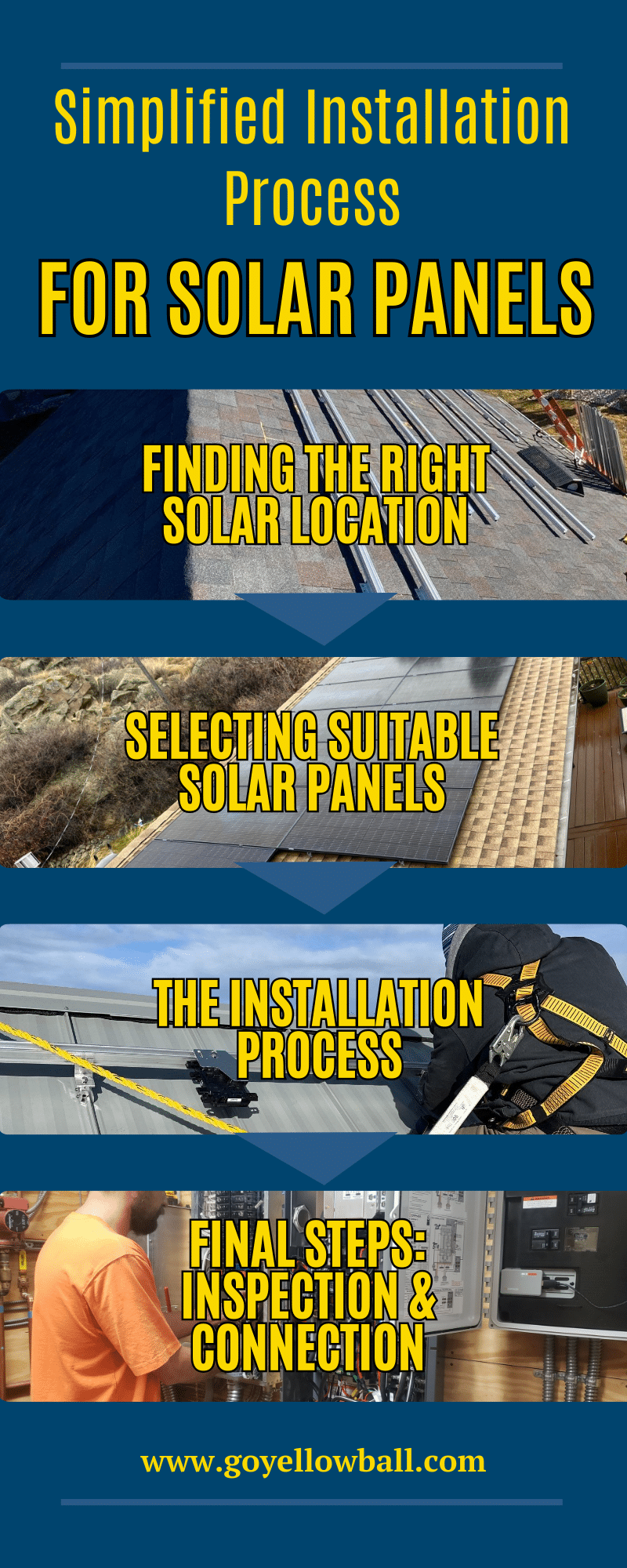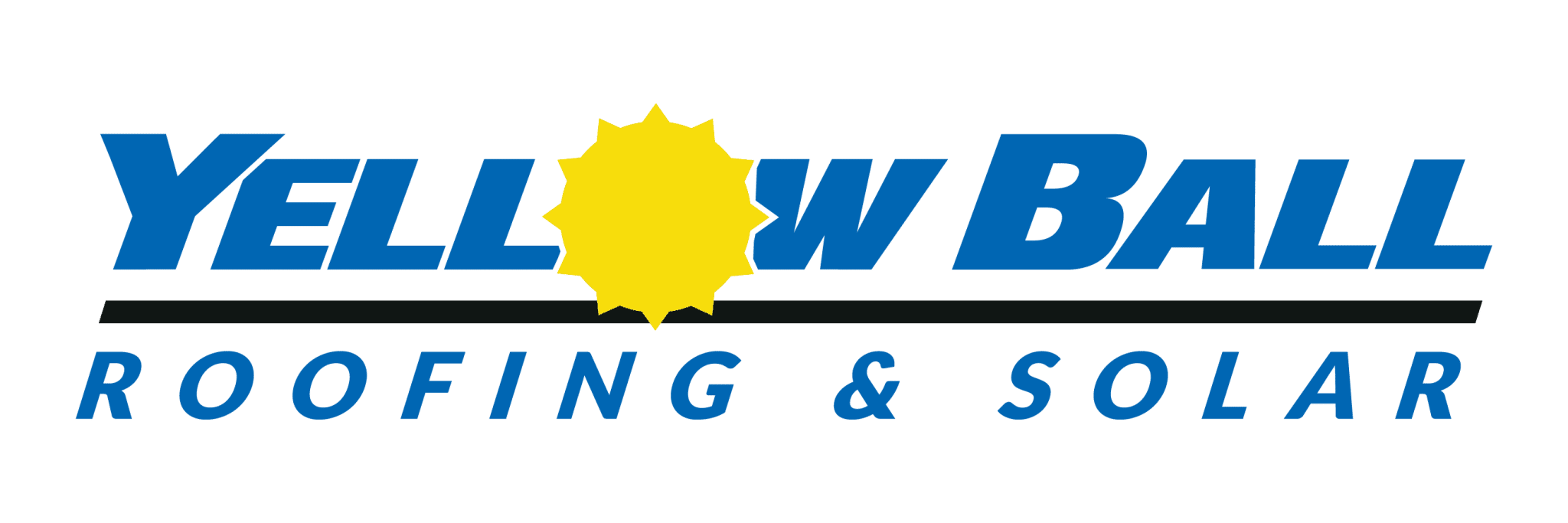Imagine a simple switch in your home, and you know that the energy lighting up your space is directly from the sun. Solar panels for homes, once a niche concept, are now becoming standard features on rooftops throughout neighborhoods.
You might have heard about using solar panels for homes to power and reduce electricity bills.
However, this isn’t just talk; it’s a revolution in progress. A greener, brighter future is emerging with every sunrise.
Worried it might be complicated? Think again.
We are here to guide you through how going solar isn’t just a smart choice; it could be the best decision for your finances and the planet.
Are you ready to explore this world of solar energy?
Let’s shed some light on what’s ahead: discovering your home’s solar potential, understanding different panel types and their efficiency, making sense of the financial savings, step-by-step installation, and much more.
Table Of Contents:
- The Solar Revolution: Harnessing the Sun for Your Home
- Evaluating Your Home’s Solar Potential
- Types of Solar Panels and Their Efficiency
- Cost Factors of Solar Panels
- Simplified Installation Process for Solar Panels
- Maintenance and Longevity of Solar Panels Simplified
- The Environmental Impact of Residential Solar Power
- Choosing the Right Solar Provider
- FAQs about Solar Panels for Home
- Maximizing Savings and Property Value with Home Solar Panels
The Solar Revolution: Harnessing the Sun for Your Home
Think of solar panels as tools that turn sunlight into electricity. They don’t need food or exercise, just a sunny spot on your roof.
Solar technology has advanced so much that these shiny rectangles can significantly reduce your carbon footprint and save money on your power bill.
Check your Solar Potential
Before diving into solar panels, you must ensure your roof is a good match. Not all roofs are equally suited for solar panels.
Some roofs soak up the sun, while others stay in the shade.
Factors like your roof’s direction, any nearby trees or buildings blocking the sun, and its structural integrity are crucial.
You can use online tools to check how much sunlight your roof receives annually using satellite imagery.
Types of Solar Panels and Their Efficiency
Choosing the right solar panel isn’t just about looks; it’s about performance.
Monocrystalline panels are highly efficient but come with a higher price tag.
Polycrystalline panels offer average efficiency at a more affordable cost.
Thin-film panels are flexible but aren’t as efficient or long-lasting.
The real challenge is determining which type makes the most sense in the long run for both the environment and your wallet.
Key Takeaway:
Solar panels are a valuable investment that can convert sunlight into electricity, reducing your carbon footprint and saving on energy bills. Assess your home’s solar potential by considering roof direction, shading, and structural integrity. When choosing solar panels, prioritize efficiency and cost-effectiveness for environmental and financial benefits.
Evaluating Your Home’s Solar Potential
Ensuring your home is ready to make the most of the sun is essential.
Location is crucial, like finding the perfect beach spot for sunbathing.
Sun Exposure: Is Your Roof Sunny Enough?
For solar panels to work effectively, your roof must be exposed to sunlight for most of the day.
If trees or buildings cast too much shade, your panels may not receive enough sunlight.
Rooftop Space: How Much Room Do You Have?
The size and shape of your roof matter. Finding a suitable space for solar panel installation can be challenging if you have many chimneys or vents.
South-facing roofs typically get more sunlight, but there are solutions for roofs facing other directions.
Roof Condition: Is Your Roof Strong Enough?
Your roof needs to be in good condition to support solar panels.
A weak roof won’t be able to hold the panels safely. Before considering solar incentives or rebates, have a professional assess your roof’s strength.
Neighborhood Regulations
Lastly, be aware of local laws and homeowner association (HOA) rules.
Ensure you comply with them to avoid conflicts with neighbors or HOA regulations regarding installing solar panels.
Key Takeaway:
To harness solar energy effectively, evaluate your home’s solar potential by considering sun exposure, available rooftop space, roof condition, and local regulations. Ensuring these factors align with your solar goals is essential before installing.
 Types of Solar Panels and Their Efficiency
Types of Solar Panels and Their Efficiency
Solar panels come in various types, each with its characteristics.
Let’s determine solar panels like monocrystalline, polycrystalline, and thin-film panels.
Monocrystalline Panels: High Efficiency
Monocrystalline solar panels are known for their high efficiency, converting up to 22% of sunlight into electricity.
They are durable and perform well in various weather conditions but are more expensive upfront.
Polycrystalline Panels: A Balance of Cost and Efficiency
Polycrystalline solar panels offer a good balance between cost and efficiency, typically converting around 15%-17% of sunlight into electricity.
They are a practical choice for those looking for decent performance without breaking the bank.
Thin-Film Panels: Lightweight and Flexible
Thin-film panels are lightweight and flexible, making them suitable for unconventional installation spots.
However, they are less efficient, typically converting about 10%-13% of sunlight into electricity.
You may need more surface area to match the power output of other types.
Choosing the correct type of solar panel depends on your budget, space, and efficiency requirements. Consider these factors to find the best fit for sustainable energy usage and needs.
Key Takeaway:
Solar panels come in different varieties—monocrystalline for high efficiency and durability, polycrystalline as a cost-effective option with good performance, and thin film for lightweight flexibility. Pick the right type to power your home sustainably without overspending.
Cost Factors of Solar Panels
Considering solar panels for your home? Let’s discuss the money side of things and address solar panel costs.
The initial solar panels cost might seem high, but significant long-term benefits exist.
Solar panels aren’t just about being eco-friendly; they can save you a lot of money.
The average solar panel installation costs range from $16,000 to $30,000 after tax credits.
While this might give you sticker shock, think about the long run. Your energy bills can drop by as much as 90%, meaning the panels will pay for themselves over time.
But wait, there’s more. Solar incentives like federal solar tax credits can reduce the total costs by up to 26% until 2023.
Some states also offer rebates and incentives, which make the deal even sweeter.
Plus, studies suggest that adding solar panels can increase your home’s value by approximately 4%. That’s not bad for some high-tech glass on your roof.
So, you’re not just saving money but investing with impressive returns while helping the environment.
Determining Your Break-Even Point
Here’s a crucial question: when will your savings surpass the costs?
To figure it out, analyze your current energy bills and compare them to projected post-solar expenses using online calculators like the one from Solar-reviews.com. You’ll see how many sunny days it will take to break even.
On average, most people achieve this in seven to eight years, less time than paying off a car.
Key Takeaway:
Thinking solar? The upfront costs are steep, but the savings and incentives like tax credits sweeten the deal. You’ll see energy bills plummet and home value soar, making it a wise investment that pays off in about seven years.
Simplified Installation Process for Solar Panels
Are you considering going solar? That’s great! Transitioning to solar energy involves a series of manageable steps rather than a daunting leap.
Here’s a straightforward explanation of installing solar panels and turning sunlight into electricity.
Finding the Right Solar Location
First things first, let’s discuss the ideal location. Just like real estate, solar power cares about location, too.
You need the best spot on your roof where the sun shines most frequently.
We’ll visit your place to assess this spot or use satellite imagery to pinpoint it.
If you’re eager to get an early idea, tools like Project Sunroof can provide insights into your home’s solar potential.
Selecting Suitable Solar Panels
Gone are the days when all solar panels were the same.
Nowadays, there’s a variety to choose from, including monocrystalline, polycrystalline, and thin-film panels, each with its advantages and price range.
We’ll help you find the type that matches your budget and energy goals.
The Installation Process
We won’t sugarcoat it; some drilling is involved here.
However, consider it more as assembling Ikea furniture than major construction work.
Our team will securely attach robust racks to your roof and fit the new solar panels firmly, ensuring they can withstand even the harshest weather conditions.
Final Steps: Inspection & Connection
An inspector will carefully examine your setup to ensure everything is in excellent condition.
Once they give us the green light, it’s time to connect your solar systems to the grid.
This isn’t as simple as flipping a switch; it involves coordination with local power companies.
But don’t worry; we handle all the details from start to finish.

You’ll see your electricity meter running backward, which means you’re saving money by harnessing sunlight.
Transform your home with clean, renewable energy. Contact us at YellowBall Roofing & Solar today for expert solar installation and start saving.
Key Takeaway:
Thinking solar? We’ve got your back. We’ll handle everything from finding the perfect sunny spot on your roof to picking panels that fit your budget. Expect a bit of drilling and securing—nothing too wild—and once an inspector gives the green light, you’re good to go. Get ready for those electricity bills to dip as you flip the switch on clean energy.
Maintenance and Longevity of Solar Panels Simplified
Do you think solar panels require zero attention once installed? Think again.
To ensure your solar panels keep generating power efficiently for years, you’ll need to do a bit of maintenance.
Here’s a simple guide on how to keep those panels working at their best.
Cleaning Your Panels
Solar panels love the sun but not dirt; a clean panel works better.
Fortunately, you don’t have to clean them weekly with a squeegee.
Just give them a thorough cleaning twice a year or after heavy dust storms or bird visits.
You’ll notice the difference in your energy production.
Inspections: DIY or Professional?
After installing your solar panels, you might feel like a superhero, but even heroes need assistance.
Regarding inspections, it’s often wise to call in professionals.
These experts can identify potential issues before they become serious problems and ensure your warranties stay valid.
Lifespan Expectations: Dealing with Degradation
Nobody likes talking about aging, including solar panels. However, let’s face it: degradation is a reality.
But here’s the good news – modern panels are durable. Many come with guarantees that they’ll still perform at around 80-90% efficiency even after 25 years.
That’s a solid investment. Just keep them clean and have them regularly inspected by professionals.
These photovoltaic wonders can outlast many reality TV stars!
The Environmental Impact of Residential Solar Power
Think of your home as not just a place to live but as a small power station that helps the environment. That’s what solar panels do.
They turn your rooftop into a source of clean energy.
But it’s not just an excellent idea; residential solar power plays a crucial role in our efforts to combat climate change.
Every unit of electricity generated (measured in kilowatt-hours or kWh) by these solar panels on your roof means we need to produce one less kWh from coal or gas power plants. It’s a straightforward concept.
According to the U.S. Energy Information Administration, in 2022, utility-scale power plants in the United States produced 4.23 trillion kWh of electricity, resulting in emissions of 1.65 billion metric tons of CO2, equivalent to 0.86 pounds per kWh.
Switching to solar power can significantly reduce this carbon footprint, similar to how coupons reduce your grocery bill.
Here’s something to consider: the sun provides enough energy to meet human needs for an entire year in just one hour.
Solar Panels: Reducing Carbon Emissions
While there are some initial carbon emissions from manufacturing and installing these solar panels, they quickly offset these emissions.
Research from the National Renewable Energy Laboratory shows that solar panels break even in carbon emissions within two to four years.
After that, it’s all environmental gain.
Stanford magazine estimates that going solar can reduce greenhouse gas emissions by a remarkable 80% compared to using electricity from conventional sources.
Cleaner Air Means Better Health
But there’s more to consider. When we talk about the environmental impact, we also talk about air quality.
Using solar power results in fewer pollutants from fossil fuels, which means fewer days with smog and clearer skies. This is beneficial for both humans and wildlife.
In addition to reducing carbon dioxide emissions, solar power helps reduce harmful emissions like sulfur oxides, which contribute to acid rain, a harmful phenomenon for ecosystems.
Solar power steps in to mitigate this problem.
Water Conservation Bonus
Another thing to note about solar panels is that they don’t require water to generate electricity, unlike traditional power plants, which consume vast amounts of water.
This is significant because water scarcity is a global issue.
By harnessing solar energy, we reduce the water consumption associated with traditional energy sources.
This has a tangible positive impact on our environment by giving lakes and rivers a much-needed break.
Key Takeaway:
Switching to solar isn’t just a feel-good choice; it’s an environmental heavyweight. Your home becomes a clean energy hub, slashing carbon footprints and smog while saving water. Those rooftop panels are silent heroes in the battle against climate change, making skies more transparent and keeping ecosystems party-ready.
Choosing the Right Solar Provider
Selecting the ideal solar provider is akin to finding a valuable item on a sunny day. You want someone knowledgeable, experienced, and backed by solid credentials.
Start by checking the provider’s reputation.
Look for qualifications recognized by MREA (Midwest Renewable Energy Association) and check their rating with the Better Business Bureau (BBB).
Ask them directly about warranty coverage.
You wouldn’t want your solar panels to fail with no support available. It’s not just about the duration of coverage but also their responsiveness in resolving issues.
Comparing Quotes Effectively
Comparing quotes might not be the most exciting task, but it’s crucial when considering solar energy.
Look beyond the price tags and examine what each quote includes regarding equipment quality and additional services like system monitoring or maintenance.
If one provider’s quote appears too good to be true, it likely is. Remember that lower upfront costs may lead to higher expenses in the long run.
Prioritize long-term value over short-term savings.
Pay Attention to the Details
Dive into the specifics by asking potential providers about panel efficiency rates.
If they start using technical jargon without clear explanations, be cautious. Reputable providers will explain things in a way that’s easy to understand.
They should be able to clarify why a particular panel type might be more suitable based on your roof angle or tree coverage.
Lastly, seek homeowner reviews or case studies from previous installations, complete with before-and-after pictures.
Real-life experiences from people who have gone through this process can provide valuable insights into what to expect far more effectively than glossy brochures.
Secure your energy future with trusted experts like us at Yellowball Roofing & Solar, a top provider of renewable energy solutions. Contact us at YellowBall Roofing & Solar now to schedule your solar service.
Key Takeaway:
When selecting a solar provider, prioritize reputation, MREA recognition, and BBB rating. Ensure comprehensive warranty coverage and compare quotes beyond price. Seek clear explanations of panel efficiency and review homeowner experiences for informed decisions.
FAQs about Solar Panels for Home
How many solar panels are needed to power a house?
The number hinges on energy use and sunlight, but an average home generally needs 20 to 25 panels.
Are solar panels on a house worth it?
Buying solar panels reduces utility bills and can increase your home’s value. Tax credits sweeten the deal.
How many solar panels do you need for a 2000-square-foot house?
Around 16 to 25 solar panels will typically cover the needs of this sized home, depending on local sun exposure.
What is the downside of solar panels on a house?
The upfront cost is steep. Depending on weather and potential roof modifications or repairs, you’ll also face variable efficiency.
Maximizing Savings and Property Value with Home Solar Panels
Embracing residential solar power is your path to energy independence and financial savings.
Start by assessing your roof’s sun exposure and selecting the correct type of solar panels for home that fit your budget and efficiency requirements.
Don’t forget to take advantage of available incentives and rebates to maximize your savings.
Regarding installation and maintenance, rely on experienced professionals to make the process smooth and hassle-free.
By producing your electricity, you’re not only saving money but also making a positive impact on the environment by reducing carbon emissions and conserving water resources.
Choosing the right solar partner is crucial, so research and ask for recommendations. Ultimately, solar power offers a brighter and cleaner future, benefiting your life and the planet.
Ready to make your home energy-efficient? Call 406-970-0681 today and let YellowBall Roofing & Solar brighten your future with solar power.




